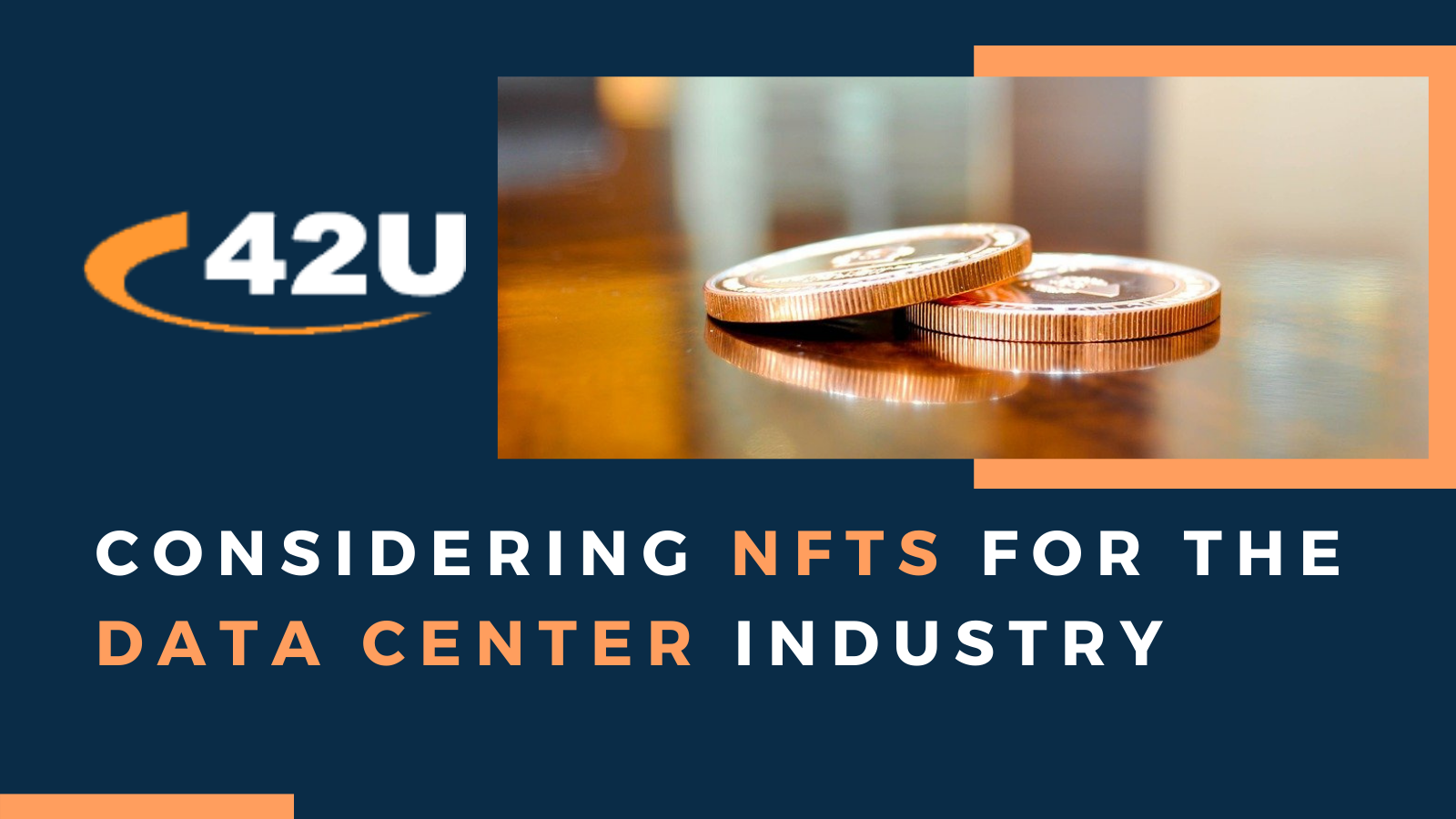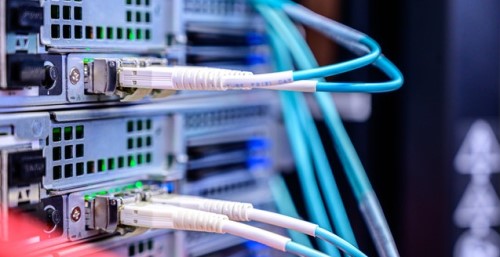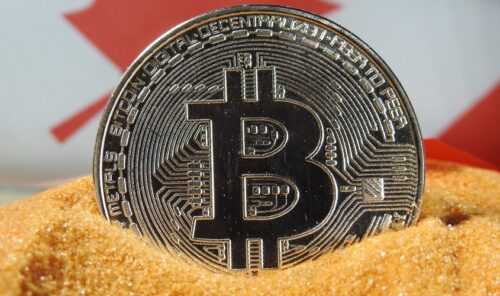
A prominent topic in the IT industry, the financial sector, the entertainment industry, and even the news has been Non-Fungible Tokens (NFTs). If you are unfamiliar or need a refresher, we’ll break down the basics real quick.
If you are already familiar with the basics and definitions, please Skip ahead.
A Quick NFT Summary
The best way to start is to define what we are talking about in relation to non-fungible tokens and address a couple of common questions.
Fungible – An economics term that has become a lot more popular recently. Fungible means an interchangeable asset. Essentially a penny is synonymous with any other penny. An euro is interchangeable with another euro.
That is until it becomes akin to something like a 1914-S Lincoln Penny, valued at $105,000+, condition pending. This would be a non-fungible item because the specific item holds value—a set number of 1914-S Lincoln Pennies globally, each with particular characteristics that matter to coin collectors. A different example of a non-fungible item would be the first print of a painting.
Blockchain – Blockchain is a specific type of database. Unlike a typical database in the way it stores information, blockchains store data in blocks that are then chained together.
As new data comes in, it is entered into a new block. Once the block is filled with data, it is chained onto the previous block, making the data chained together in chronological order.
Different types of information can be stored on a blockchain, but the most common use so far has been as a ledger for transactions. In some instances, blockchain is used in a decentralized way so that no single person or group has control, so all users collectively retain control.
Decentralized blockchains are immutable, which means that the data entered is irreversible. For Bitcoin, this means that transactions are permanently recorded and viewable to anyone.
More here: https://www.investopedia.com/terms/b/blockchain.asp
Etherium– is an open-source, decentralized software platform and programming language (Turing complete) running on a blockchain, helping developers to build and publish distributed applications. It also has its own associated cryptocurrency named ether. The currency is used to keep a standard value for everything held on Etherium.
More here: https://www.investopedia.com/terms/e/ethereum.asp
Is this related to cryptocurrency? Currently, most NFTs are valued at specific dollar amounts, but they are initially traded and purchased via cryptocurrency, and the exchange rate is a significant factor to consider.
If you still want more explanation to understand NFTs more generally or gain more understanding to how end-users would consider them, you can read through this Verge article.
NFT Security Standards

ERC721 – As they describe themselves: ERC-721 is a free, open standard that describes how to build non-fungible or unique tokens on the Ethereum blockchain. While most tokens are fungible (every token is the same as every other token), ERC-721 tokens are all unique.
This was the old favorite security measure for NFTs developed for a game known as Crypto-Kitties.
This standard is made to manage rare, one-of-a-kind digital collectibles. It is built with the ability to map unique identifiers to addresses representing the owner of the token. It also provides an authorized and permissioned way to transfer these assets.
ERC-1155 – Is listed as: The Multi Token Standard with the ability to mint an infinite number of both fungible and non-fungible tokens in a single deployed smart contract. ERC-1155 is the only token standard that enables you to create every type of asset, from currency and real estate to digital art and gaming items.
This standard brings the idea of semi-fungibility into the NFTs. IDs represent a class of assets instead of individual assets. They are creating an advantage with efficiency and reducing the efforts to modify intelligent contracts for many items.
These standards are made to service NFT blockchain functions, including Standardization, Traceability, Interoperability, Programmability, and Liquidity, Immutability, & Provable Scarcity. If you wish to read up more on this aspect, please read this guide.
We’ve Seen Things like NFTs Before
While the current implementation of NFTs may or may not ultimately be a fad, in the form of high-priced digital collectibles, there’s more potential on display. The idea of ownership over a specific digital file raises some interesting implications moving forward. We already deal with individualized data that must remain separated and secure in things like personal documents, photos, or bank accounts. NFTs infer ownership over particular images, or even specific tweets.
We’ve even seen equitable examples before in the video gaming space where certain accounts will have access to certain items on their account. While there are multiple copies and variants of the in-game item, the game systems will need to track each individual instance of the item as it transfers or is removed from each account individually.
These game items have even had a real-world monetary value assigned to items via a currency transfer rate from in-game currency to dollars. Fungible and Non-Fungible items exist and are managed in these systems which is why they are equatable on a technological level. But these are closed systems where those who make the game can control the value, rarity, and stock of the items available. This means the technology has a proven record, but enabling it to an open market outside of a closed system is not. Thus the economic consequences are still being determined at the time of writing.
NFTs Are still Hosted

The technical implications of NFTs could affect how and where the organizations want to store them and might raise questions with redundancy.
Since the address to the NFT is stored on the blockchain but only accessible by the user with the proper credentials, or so we hope, that remains akin to accessing a bank account.
Users can access their accounts at various branches or ATMs. Actually accessing the NFT itself should be more like a safe deposit box. So when you access your NFT song for this example, it should be akin to the David Bowe’ Heroes’ 8-track with the scratches from sliding under your car that you pull out.
But is it? It’s a digital copy, it exists on a server somewhere, and if someone was to view your file or an identical file, they could right-click, save as and have an identical copy to yours.
Why should you care about this? If your customers are valuing the exclusivity of their file, you’ll need to consider how you communicate certain realities with them. It’s easy to simply not talk to them about the dubious nature of the ‘non-fungible in relation to digital goods. But they want to know their purchase is secure. Some of these NFTs are going for thousands or millions of dollars, which means a single corrupt file could become a significant issue. But if you’re dealing with duplication as a security measure, especially for a file valued at millions of dollars, you’re calling that value into question. Considering how you communicate this to your client will be necessary.
While much of the focus is on NFTs as media, Etherium has more extensive plans for this technology that are already in practice. Many are using it for bartering, exchange across other currencies, and as collateral for loans. These are complex monetary functions to be available for every user accessing the blockchain. These uses are more practical to everyday users as well, and not just people jumping on a fad or oddity, which would make these considerations more critical to several organizations beyond those dealing with entertainment.
The work in minting your NFT
When you mint an NFT, a few things have to happen:
It needs to be confirmed as an asset on the blockchain. The owner’s account balance must be updated to include that asset. This makes it possible for it to be then traded or verifiably “owned”.
The transactions that confirm the above need to be added to a block and immortalized on the chain
The block needs to be confirmed by everyone in the network as “correct”. This consensus removes the need for intermediaries because the network agrees that your NFT exists and belongs to you. And it’s on the chain so that anyone can check it. This is one of the ways Ethereum helps NFT creators to maximize their earnings.
While innovative this process has run into many problems, some of which data centers will need to contend with.
NFT Environmental Concerns

In short, currently, it takes a great deal of energy to generate an NFT. The proof is laid out but in short: “One researcher calculated that a certain artist is selling two pieces of artwork used over 175 MWh, creating the greenhouse gas emissions of 21 years of a U.S. household’s electricity use.” That is a single NFT. So if an artist has a release of a dozen NFTs suddenly in one night, 252 household years of greenhouse gases are used for a minimal number of tokens being generated.
It is quite a process to watch
Bitcoin: Initiated pic.twitter.com/baB58FKw6T
— Matt Lohstroh (@lohstroh) February 8, 2021
As such public perception is reacting negatively to NFTs as awareness grows. Even popular bands like the Gorillaz are being called out. The numbers are so shocking that not only are fringe environmentalists pushing against this, but most well-meaning citizens are as well.
TechCrunch had more to say about the Environmental damage as well.
However, that doesn’t mean we need to call for a full stop to NFTs. As Facilities Net mentioned in their article, we need to accelerate the use of solar and wind energy that does not produce nearly as much carbon. They also allude to how NFTs can be minted without a massive draw on power and resources.
Why Some NFTs Take So Much Energy & Others Don’t
The problem is that most current NFT services use Proof of Work to mint their coins. Proof of work represents a system that, through sheer processing power, deters any malicious activity that can potentially damage the network’s stability. It was developed as a way to prevent spam emails and DDOS attacks.
Basically, the ‘work’ is a series of arduous equations that need to be computed to prove validity. The process of doing so takes a large amount of energy.
Whereas Etherium 2.0 and others are moving to Proof of Stake. Etherium points to proof of stake having better energy efficiency, stronger immunity to centralization, and stronger support for shard chains.
Proof of stake is estimated to cut energy consumption by close to a hundredfold. However, it hasn’t been brought to scale, and nobody knows if this estimation is accurate yet. However, less is less overall, and this technology may still have room for improvement, but it needs to be tested.
Etherium plans on launching it in early 2022, but that’s still a ways off, and a lot of energy and greenhouse gases will be put out into the world before then.
Clearly the differences here equate to massive costs on the data center side, when proof of work requests pass through a data center. Pushing for proof of stake would be in the interest of data center operators as it would have a massive impact on the workload that needs to be processed.
NFTs tied to the Physical World

There are efforts being made to make NFTs tied to physical items. Datacenters will need to concern themselves with this eventuality as well, when the time comes. It may be considered a doomsday scenario to some, but if any data is altered, corrupted, or ever accessed here, it would be a bigger problem than dealing with a bank account breach.
People’s ownership of a single physical item could be called into question if something odd happens with an NFT tied to a physical object. If a breach happens and someone steals the NFT they could claim ownership of an item they never possessed, or have a duplicate certification of ownership. How that could be resolved remains an open question.
What we can surmise is that legal bodies would be reaching out to data centers for an understanding here of what happened. It won’t be an issue easily resolved like refunding a user when illicit charges are made to their credit card by an unknown third party. That’s why the fungible or semi-fungible status of these items is an issue for the IT space.
However, these events happen every day. So why wouldn’t the same happen to the blockchain in time? Security is already being poked at in the NFT world and will be broken in time.
Addressing the NFT Negativity
This article is covering an overwhelming amount of negative topics surrounding NFTs. Drastic environmental concerns are still in play. Questioning the very validity of the idea of an NFT and it’s worth. All of this simply points out several challenges NFTs will present in data centers as we move forward. Even future challenges with NFTs as they move into the physical realm.
What about the upside? There is a lot of money moving around with NFTs, and tying finance more closely to the tech sector as well. IT’s just impossible to ignore how crass and silly most NFTs are, and many people’s instincts are that the current implementation is a fad. However, the technology and the potential NFTs represent are here to stay, for good or ill.
It may seem crazy to open your infrastructure to an NFT today. We would agree. But once states start trying a new line of bonds to NFTs, or some massive payment validity is tied to an NFT, many data centers will need to reconsider their policies, and that day may be coming in short order.
There’s no crystal ball, no site to source for the future. However, we predict that once the NFT fad fades and fiduciary growth becomes more digital, those with policies already in place to deal with technology and the blockchain, in general, will be ahead of the game with a great line of successful business to show for it.




